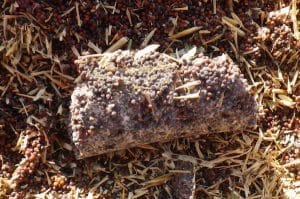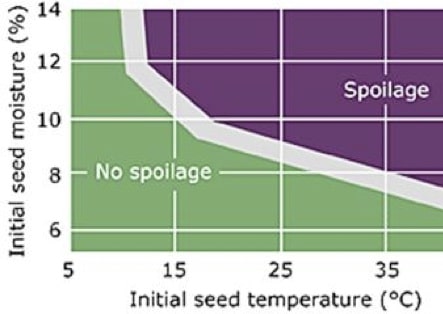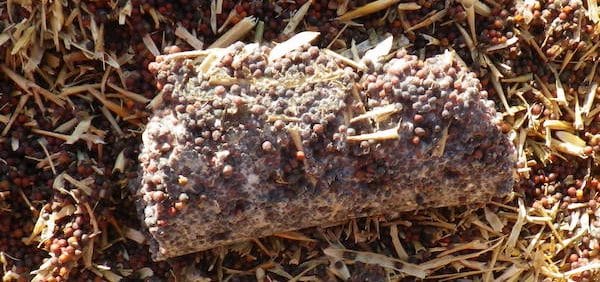Canola harvested at 12.5% moisture (tough) or 15% moisture (damp) may not last long in storage before spoilage begins. How long is hard to predict. If warm, spoilage could start within a matter of days. If stored cool or cold, canola may last longer without spoilage, but this bin will become very unstable with any stretch of warm weather. Canola at very high moisture content is also at risk of freezing together in one big solid lump in the bin, so early delivery may avoid the scenario of having to warm the bin back up again to get the bulk to flow.
Lower-risk is considered 8% moisture. High-risk canola is best dealt with early to reduce the spoilage risk. It helps to have a drying, storage or marketing plan before taking high-moisture canola off the field.


These steps will help improve conditioning results and reduce risk:
1. If possible, under-fill available bin space. The less depth to aerate, the better, because it is possible that spoilage could occur before the aeration front even reaches the peak of the bin. If using natural air drying for canola, fill the bin 1/2 to 2/3 full.
2. Level the cone. A flat surface to the grain will improve airflow. Levelers built into bins can also help to distribute chaff and fines.
3. Keep aeration fans on. Even if the air doesn’t have capacity to dry at this point, aerate to cool and create uniform temperature conditions in the bin. While some recommend turning fans off at night or off during the day, this might increase the risk, depending on the situation. The mass transfer of water between air and grain is complex. As Joy Agnew says: “We can predict how air will affect grain moisture content assuming the temperature of the air doesn’t change. But we know air changes all the time.”
4. Use supplemental heat, if possible. Air that is less than 10°C has very limited drying potential. Adding heat to cool air will increase its water holding capacity, and therefore capacity to dry. Read this article for tips on how to use supplemental heat.
5. Turn the bulk frequently. Turning the bulk can break up potential hot spots that have started to form, and will also help to even out the conditions in the bin. This also provides a chance for additional inspection.
6. Monitor diligently.
Double-check canola stored HOT. Remember those hot harvest days back in August and early September? Aeration would have cooled hot canola somewhat, but as outside temperatures cool, turn the fans on again to move that cooler air through the bin to cool the canola even more. For peace of mind, a better option is to cycle one third to half of the canola out of the bin to check it for signs of spoilage, then put it back in the top again. This will also cool the grain a lot faster.
Further reading:
Tips for drying tough and damp canola
Slow harvest and storage risk
Bag storage short term, especially for tough canola
On-off strategies for canola aeration
Canola Digest article: How bin size, long-term storage and straight combining can increase “Storage risk”
Country Guide: Turn up the heat on aeration fans when drying canola (One grower’s experience with adding supplemental heaters.)
How to check bins
CGC: Tough and damp ranges for grains and oilseeds

